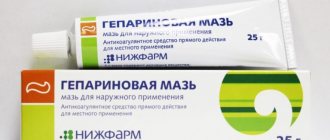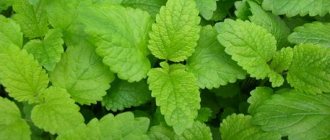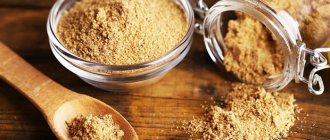Composition and effects
The active ingredient in the composition is ichthyol. 25 g of product contains 5 g of ichthyol. There are concentrations of 10% and 20%. The auxiliary component is Vaseline.
The drug acts in a short time. It quickly eliminates swelling, pain and itching, and relieves symptoms of exacerbation of hemorrhoids.
Ichthyol in the composition has an antiseptic, anti-inflammatory and wound-healing effect. It effectively fights infection, so healing of the skin occurs faster. In addition, ointment with ichthyol has an analgesic effect, eliminates peeling and prevents keratinization of the skin.
Together with other medications, this drug improves blood circulation, prevents the formation of blood clots, and improves venous outflow. Ichthyol in the composition helps to avoid thrombosis of hemorrhoidal veins.
Medicinal properties
Ichthyol ointment has a diverse effect on the body. It has an antiseptic, anti-inflammatory effect, and is characterized by antipruritic and keratostatic activity. The medicinal properties of the drug eliminate itching of the skin, remove keratinization, increase elasticity and metabolic processes. The most important advantage of the drug is its deep penetration into the upper layers of the epidermis. This reduces inflammation, relieves swelling, and improves blood circulation. Moreover, the ointment has an analgesic effect, since it actively affects pain receptors and reduces exudation.
Indications and contraindications
Ichthyol ointment is effective in the treatment of infectious and inflammatory skin diseases and is used in urology, gynecology and proctology.
Purpose:
- dermatitis and eczema;
- burns, purulent wounds and ulcerative skin lesions;
- erysipelas;
- rosacea, boils, carbuncles;
- hidradenitis (inflammation of the sweat glands in the armpit);
- light pox;
- staphyloderma, in particular, ostiofolliculitis (inflammation of the hair follicle), sycosis (purulent skin disease caused by staphylococcus), streptoderma (inflammation caused by streptococcus);
- discoid lupus erythematosus;
- inflammatory diseases of the pelvic organs (parametritis, salpingitis, colpitis, vaginitis, adnexitis, endometritis, cervicitis, prostatitis);
- neuralgia;
- arthritis;
- inflammation of hemorrhoids.
In proctology and urology, the ointment is used externally or in the form of tampons. It relieves pain and reduces inflammation. Damaged areas of the rectal mucosa and skin in the anorectal area are restored faster.
The ointment is effective for external and internal hemorrhoids at the initial stage. It can be used for hemorrhoidal bleeding, infection and suppuration of hemorrhoidal cones.
Thanks to its regenerating properties, the product helps with thrombophlebitis, when trophic ulcers have appeared and there is a possibility of gangrene.
The active substance of Ichthyol ointment can enter the general bloodstream.
The only contraindication for use is individual intolerance or allergy to ichthyol, as well as children under 6 years of age.
Ichthyol ointment: instructions and indications for use
Ichthyol ointment is a medical preparation used for disinfection, relieving pain syndromes, and reducing inflammation.
The active ingredient is ichthammol, a natural product obtained from oil shale resins.
Ichthyol ointment is widely known as a time-tested, strong, and most importantly, safe anti-inflammatory agent.
In addition to the active substance, the medicine contains only petroleum jelly, there are no chemical additives, so there are few contraindications for the use of the drug.
Ichthyol ointment is also an effective remedy for many skin problems. Despite the abundance of modern analogues, the drug is actively used for symptomatic treatment, prescribed for various inflammatory processes in the body, as well as for skin diseases and neuralgia. Outwardly it looks like a homogeneous dark-colored substance. It has a sharp characteristic odor.
pharmachologic effect
The drug belongs to the group of anti-inflammatory drugs for topical use.
Prescribed for local relief of pain syndromes, reduction of inflammation, acceleration of the formation of the stratum corneum of the skin.
The ointment is applied to the skin, reduces the sensitivity of nerve endings, which in turn leads to changes in tissue trophism. An additional effect is an improvement in vascular tone at the site of application.
Release form, composition
Ichthyol ointment consists of the active substance (ichthammol) and medical petroleum jelly. ichthammol can be 10% or 20%. The domestically produced drug is produced in dark glass jars of 25 grams, sold in cardboard boxes (1 jar in 1 box). Belarusian Ichthyol ointment is sold in the form of tubes of 25 grams.
Indications for use
Ichthyol ointment is prescribed:
- for arthritis (a variety of joint diseases, accompanied by so-called “aches”);
- for neuralgia (sciatica, lumboischialgia, radiculopathy, intercostal neuralgia);
- for eczema (an inflammatory skin disease with characteristic rashes, burning, itching);
- for skin infections;
- for burns;
- with erysipelas;
- with furunculosis (acute purulent bacterial inflammation of the hair follicles, sebaceous glands and surrounding tissues).
Rectal forms of the drug or ointment mixed with glycerin are prescribed for various inflammatory processes in the uterus and surrounding tissues, as well as for prostatitis.
Directions for use, dosage
As a rule, the drug is applied to the site of inflammation or skin disease 1-2 times a day , in an even layer of several millimeters. To protect clothing and maintain effectiveness during mobility, the application site is covered with a gauze bandage.
It is important to use clean bandages and gauze after each dressing change. Because of the pungent odor, it is better to apply the medicine not with your hands, but with a cotton swab or disk. The duration of treatment and the thickness of the applied layer should be agreed with the attending physician.
Interaction with other drugs
Not compatible with solutions of iodide salts : potassium or sodium iodide (used to treat skin scars), Lugol's solution (a medicine for yeast fungi), iodopirone (an antiseptic and a remedy for the treatment of purulent wounds) and others.
When treating neuralgia, you cannot combine Ichthyol ointment and alkaloid preparations .
Also, Ichthyol ointment is not compatible with solutions of heavy metal salts (cannot be used, for example, together with anti-inflammatory drugs containing lead salts).
Ichthyol ointment is actively used in mixtures with glycerin, zinc or sulfur.
Mixtures with sulfur and zinc can cause an allergic reaction, but are more effective than pure ichthyol ointment.
Glycerin lotions and tampons are used to prevent pure ichthammol from getting into the eyes or mucous membranes when treating facial skin diseases or gynecological diseases.
Overdose
When using Ichthyol ointment according to the doctor's instructions, an overdose is practically impossible due to the small number of possible side effects and contraindications.
Users have reported cases of skin staining (applying the product to the face is recommended) and burns resulting from too intense use.
Such an overdose is treated symptomatically, under the supervision of a specialist.
Contraindications
The only contraindication to the use of Ichthyol ointment is high sensitivity to ichthyol. Patients with such sensitivity may experience local and general allergic reactions - itching, swelling, redness.
During pregnancy and lactation
Ichthammol, when used externally is not absorbed into the blood , so there are no restrictions on its use during pregnancy and breastfeeding.
The exception is applying the medicine to the nipple area during lactation (can lead to ingestion by the child) or overdose (in this case, a small amount of the drug can still be absorbed into the blood).
Intravaginal use of suppositories (another form of drug release) during pregnancy is possible only as prescribed by a specialist and under his supervision.
: “Ichthyol ointment - what to use: the doctor says”
Impact on the ability to drive vehicles and operate machinery
The drug for external use does not have an effect that could interfere with driving a car or working with devices or mechanisms. There is no decrease in activity; only a local effect is exerted on the nervous system. With a high-quality bandage, the use of Ichthyol ointment does not interfere with any activity.
Use in childhood
Experience shows that children tolerate treatment with ichthyol ointment well, especially if bandages or patches are used. The instructions for use do not recommend using the drug when treating children under 6 years of age. It is important to avoid the risk of ingestion of the substance, and also not to apply the drug to open wounds or broken skin. .
Storage conditions and periods
The medicine can be stored for no more than three years from the date of release. According to the instructions, the drug should be stored in a cool place, protected from light and children.
Conditions for dispensing from pharmacies
Dispensed without a doctor's prescription.
Average price in Russia
In Russian pharmacies, a 25 gram jar of Ichthyol ointment costs about 100 rubles , both with a ten percent and twenty percent concentration of ichthyol. The Belarusian analogue with 20% ichthyol costs 115 rubles per tube.
Average cost in Ukraine
Ichthyol ointment is also produced in Ukraine; mainly local versions of the drug are found on the shelves of Ukrainian pharmacies. The cost varies from 10 to 15 hryvnia per tube.
Analogs
| Drug name | Country of Origin | Active substance | Price | Differences from Ichthyol ointment |
| Ichthyol, rectal suppositories | Russia | ichthammol | 90 RUR for 10 ampoules | method of application: rectally; prescribed for inflammation of the uterus and prostate |
| Solcoseryl ointment | Switzerland | deproteinized dialysate from the blood of dairy calves | 350 RUR for 20 g | Caution is required when used by pregnant women and during lactation; allergic reactions to the skin, swelling, swelling and rashes are possible |
| Vishnevsky ointment | Russia | xeroform and birch tar | 45 RUR for 30 g | heals abscesses better, draws out pus worse, less painful |
Reviews
Reviews about the use of Ichthyol ointment are mostly positive . Users appreciate its low cost, proven effectiveness over the years in the fight against defects and purulent skin diseases, and in drying out abscesses, pimples or wounds.
Its analgesic effect is highly appreciated; the drug helps relieve joint pain. They often note the safety of use and talk about how children were successfully treated for a variety of minor abrasions or cuts.
Users share their impressions of how well the ointment helps with neuralgia, and sometimes “saves from operations.”
The most common complaint is the unpleasant odor of the ointment. often give advice not to overuse the drug , as this may negatively affect the course of treatment.
Some also note that the substance stains the skin at high concentrations, so they urge careful application of it to the face.
Source: https://SpinaTitana.com/preparaty/drugie-preparaty/ikhtiolovaya-maz.html
Instructions
Instructions for use suggest external use of the ointment for skin diseases, neuralgia and arthritis. The product should be applied in a thin layer to the affected area after preliminary cleansing. Approximately 2-4 g of the drug should be consumed.
There is no need to rub the product in until it dries completely. You can cover the area with a dry cloth. The scheme for using the product is 2-3 times a day for 10-20 days.
If you apply the medicine to the face area, you must be careful not to get it on the mucous membranes of the eyes or mouth.
For thrombophlebitis, the ointment should also be applied in a thin layer, covering an area of healthy skin.
For thrombophlebitis and trophic ulcers, systemic drugs should be used in combination. Local remedies alone are not enough.
Application for hemorrhoids is slightly different. Hygienic tampons with ointment must be inserted into the rectum. The dosage is no more than 15 g of ointment.
To facilitate the procedure, before insertion, moisten the tampon and spread the skin around the anus with a 10% glycerin solution. The drug should be used 1-2 times a day for 10-14 days. After the course of treatment, you must take a break of at least 2-3 weeks.
Ichthyol ointment: instructions for use, composition, what it helps with, price and reviews
The drug has certain features of use. And its active ingredient refers to chemical compounds that can provoke allergic reactions. Therefore, it is necessary to consult a doctor before starting treatment. He will determine safe dosages and tell you how to minimize unwanted side effects.
Description of the drug
The active ingredient of Ichthyol ointment is ichthammol. To obtain it, dry distillation of bituminous shale is carried out. The result of chemical reactions is a thick, syrupy black mass with a very specific odor. Ichthammol contains a very different thiophene containing a high concentration of sulfur.
It is this component that determines the therapeutic activity of Ichthyol ointment:
- antimicrobial;
- disinfectant;
- regenerating.
The external agent is suitable for single-component therapy and in combination with analgesics, glucocorticosteroids, antibiotics, and sulfonamides. The drug is prescribed to patients diagnosed with inflammation of the skin or mucous membranes as a result of infection.
They can simply be lubricated on the skin or used as occlusive dressings. In gynecology and proctology, the use of tampons is practiced, which are inserted into the rectum or vagina.
Clinical and pharmacological group
The sulfur-containing active ingredient of the drug allows it to be included in the pharmacological group of antiseptics and disinfectants. But these are not all the healing properties of ichthammol.
How does Ichthyol ointment work after application to the skin and mucous membranes:
- reduces the severity of pain;
- relieves acute and chronic inflammatory processes;
- carries out a kind of sanitation of infectious foci;
- improves blood supply to damaged tissues with nutrients and biologically active substances, as well as molecular oxygen;
- accelerates metabolic processes, and, consequently, regeneration.
The anti-inflammatory agent normalizes microcirculation, which leads to the rapid elimination of edema and hematomas.
Its use makes it possible to prevent putrefactive processes due to its aseptic and drying effect.
Release form and composition
The composition of ichthyol ointment is not diverse. The medicine contains the active ingredient ichthammol and the auxiliary component medical vaseline. Domestic manufacturers produce 10% and 20% of the drug in aluminum tubes or dark glass jars. The secondary packaging is a cardboard box with an accompanying annotation, and sometimes it is missing altogether.
In this case, instructions for use:
- stuck on the jar;
- issued by the pharmacist separately when purchasing the drug.
In addition to the ointment, Ichthyol’s therapeutic line includes rectal suppositories of the same name.
Indications and contraindications
Ichthyol ointment in gynecology is used in the treatment of inflammatory diseases of the reproductive system. The drug eliminates not only the symptoms, but also the cause of andexitis, cervicitis, bacterial and fungal vaginitis or vulvovaginitis.
It helps well against chemical, thermal, radiation burns and frostbite of various locations. To treat pimples, acne and post-acne, a 10% product for local application is used.
The ointment is included in the therapeutic regimens of patients diagnosed with the following pathologies:
- inflammation of the hair follicle as a result of penetration of pathogenic bacteria;
- dry and weeping eczema;
- erysipelas;
- hidradenitis;
- pyoderma;
- dermatitis, including allergic and neurogenic etiology;
- rosacea;
- staphyloderma;
- streptoderma;
- ulcerative lesions of the skin and mucous membranes.
The instructions for use of Ichthyol ointment recommend its use for boils and abscesses accompanied by the formation of pus. Traumatologists and orthopedists prescribe it to patients to relieve inflammation in joint structures. Indications are often arthritis and intercostal neuralgia.
In proctology, the drug is used to treat anal fissures, internal and external hemorrhoids. Under its influence, tissue regeneration accelerates, promoting rapid recovery. For hemorrhoids, the ointment can also be used as an antiseptic and to reduce the intensity of pain, itching and swelling.
The presence of only two components in Ichthyol ointment explains the small number of its contraindications. It is not prescribed when diagnosing a patient's individual sensitivity to ichthammol. Some people refuse treatment because of the specific smell of the drug.
Directions for use and doses
It is best to ask your doctor about how to use Ichthyol ointment.
The clinical effectiveness and duration of the therapeutic course depend on the method of application.
For example, to eliminate large acne, the product must be applied pointwise 2-3 times a day. And to treat rashes on the skin of the body or face, it is advisable to use occlusive dressings. Instructions for use recommend applying Ichthyol ointment to boils 3-4 times a day without rubbing. This multiplicity is especially relevant for abscesses with a large content of pus.
There are the following rules for the treatment of inflammatory and infectious skin diseases:
- using only sterile wipes or bandages;
- daily change of dressings;
- pre-treatment of the skin with warm water and soap, and then with antiseptic solutions (Furacilin, Chlorhexidine or Miramistin).
The duration of the therapeutic course varies depending on the stage of the inflammatory process and the degree of tissue damage. The average duration of treatment is 10-14 days. It takes about 3 weeks for anal fissures to heal and hemorrhoids to disappear. A single dose of the drug is 1.5-2 g, which corresponds to a 1-2 cm strip of ointment squeezed out of the tube.
Side effects and special instructions
When applying Ichthyol ointment to an open wound, discomfort often occurs - burning and itching. Skin irritation may develop and the inflammatory process may intensify.
If the drug is used on large areas of the body, then an excess amount of ichthammol penetrates into the bloodstream. This can cause systemic side effects: nausea, dizziness, drowsiness and fatigue.
During treatment, allergic skin reactions are also possible - rash, swelling and redness of the epidermis.
Drug interactions
During treatment with Ichthyol ointment, you should not use drugs whose active ingredient is iodine. It can react chemically with sulfur ions to form salts. These compounds can irritate the skin and provoke the formation of new inflammatory lesions.
Pregnancy and lactation
Ichthyol ointment is used during pregnancy without any restrictions.
Only the duration of treatment is reduced to 7-10 days. Ichthyol ointment during pregnancy can be used in the treatment of any skin, joint, and gynecological pathologies. When treating cracked nipples with the product, its remnants should be washed off before feeding the baby.
Use during pregnancy and pregnancy
The instructions do not say that the ointment is safe for pregnant women. According to the description, the product can be used during pregnancy and breastfeeding only on the recommendation of a doctor.
The safety of hepatitis B, as well as the effect on the fetus of this drug has not been studied. Gynecologists agree that Ichthyol ointment will not cause harm, since it has been used by pregnant and nursing mothers for decades.
During pregnancy, it is advisable to refrain from inserting tampons into the vagina to avoid irritation, and during breastfeeding, care must be taken to ensure that the ointment does not come into contact with the mammary glands.
Indications for use
What does Ichthyol ointment help with:
- Burns, eczema, erysipelas
- Purulent forms of microscopy and trichophytosis
- Streptoderma
- Hidradenitis
- Arthritis and neuralgia accompanied by inflammation
- Solar eczema, lightpox, lupus erythematosus
- Acne, spots, boils
- Ostiofolliculitis
- Sycosis.
In addition to the listed ailments, the ointment is used in gynecology, as well as in the treatment of prostatitis and pelvic diseases.
Analogs
There is only one substitute drug for Ichthyol ointment with an identical composition. These are Ichthyol suppositories. Their average price is about 80 rubles.
There are products that have a similar effect:
- Chlorophyllipt. The solution has anti-inflammatory and antiseptic effects and is effective against staphylococci. The cost of 100 ml is about 300-350 rubles.
- Elon. The ointment is effective for purulent skin lesions. The cost of 25 g of the product is from 700 rubles.
- Antiseptol N. This is a solution for external use. Contains chamomile extract and ethanol. The solution is suitable for compresses and has an antiseptic and anti-inflammatory effect. The cost of 100 ml is about 40 rubles.
- Vishnevsky ointment. Price 40 g from 45 to 70 rub.
All products are available without a prescription.
It should be understood that Ichthyol ointment will be effective only at stages 1-2 of varicose hemorrhoidal veins. Hemorrhoids of 3-4 degrees are often treated surgically.
Author: Oksana Belokur, doctor, especially for xVarikoz.ru
Ichthyol ointment can be used during pregnancy
Ichthyol ointment is an external antiseptic. The instructions recommend using it for acne, ulcers, and joint inflammation .
The use of ointment is traditional and popular for drawing out boils that do not ripen for a long time.
What does ichthyol ointment do? What is the best way to use it in treatment? And does ichthyol ointment help with viral skin lesions (chickenpox, herpes)?
Ichthyol – antiseptic
Ichthyol (or ingammol
, or in chemical terminology -
ammonium bituminous sulfate
) is a resinous substance from shale rocks. It is a concentrate of organic substances with a large amount of sulfur. Ichthyol is obtained by multi-stage processing of organic resin found in sedimentary shale rocks.
Note: the name “ichthyol” is translated from Greek as “fish” or “fish oil”. This is due to the fact that skeletal remains of prehistoric fish are often found in shales.
In the production of ichthyol, shale resins are sublimated and distilled, after which they are treated with alkali, sulfuric acid and ammonia water, after which they are evaporated and a medicinal substance is obtained.
It was introduced into treatment practice at the end of the 19th century by the German physician Paul Unna.
The medicine was given anti-inflammatory, antiseptic and analgesic effects
. It was intended for external therapy of skin and joint diseases, inflammations.
Today, ichthyol ointment is a traditional remedy for the treatment of purulent wounds . It is available in a concentration of 10%
. Treatment with ichthyol ointment is used in dermatology, urology, gynecology and veterinary medicine.
At the same time, the veterinary composition differs in concentration (20%
instead of
10%
).
Ichthyol ointment 20%
has a more pronounced effect. Therefore, sometimes patients use the veterinary composition for a quick therapeutic effect. Ichthyol contains a lot of organic sulfur.
Therefore, its effect is similar to sulfur ointment (also antiseptic and anti-inflammatory).
The effect of ichthyol in ointment
Ichthyol ointment 10% is an effective drug for the treatment of skin and joint inflammation. How does the ointment work?
The active substance (ichthyol) inhibits the production of inflammatory mediators. In this regard, its effect is similar to the work of non-steroidal anti-inflammatory drugs, as a result of which joint pain is reduced and the development of inflammation is limited. In case of inflammation, ichthyol ointment acts as an analgesic - it reduces inflammation and reduces pain .
Ichthyol also slightly irritates the nerve endings, and this increases blood circulation and vascular tone in the area where the ointment is applied.
As a result, the nutrition of tissues improves (in medical terminology, their trophism), the elimination of metabolic products is accelerated, and as a result, the area of inflammation decreases and the amount of pus (if any) decreases.
Thanks to the tone of the vessels, their lumen narrows and the flow of fluid to the site of inflammation decreases. Which leads to a decrease in swelling.
Thus, ichthyol ointment draws out pus, treats inflammation on the skin (boils, dermatitis, post-burn redness) and in subcutaneous tissues (joints).
Treatment of inflammation has an effect on reducing pain. Therefore, ichthyol ointment is called not only an anti-inflammatory, but also an analgesic.
What is ichthyol ointment used for?
Ichthyol ointment in the instructions for use refers to antiseptic drugs.
It exhibits a bactericidal effect primarily against gram-positive bacteria - Staphylococcus aureus, streptococcus .
It also has some inhibitory effect against pathogenic fungi . Therefore, it is used to treat skin inflammations of bacterial and fungal origin, as well as joint pain.
Let's list what ichthyol ointment helps with and when it is used for external treatment:
- For skin infections (acne of various origins - boils, ulcers, acne, hidradenitis - purulent inflammation of the sweat glands in the armpits).
- For skin injuries (burns, frostbite) after primary epithelization.
Note: ichthyol ointment is not applied to an open wound.
Therefore, it is not applied to open burn wounds, but is used after primary healing, the so-called primary epithelization.
- For allergic skin inflammations (eczema, dermatitis).
In gynecology, ichthyol ointment is used to treat inflammation (in the chest - mastitis, in the abdominal cavity - fallopian tubes, ovaries, uterus, as well as endometritis). In urology, ointment is used in the treatment of prostatitis.
Note: for inflammation of the pelvic organs, ichthyol rectal suppositories are used. They are introduced into the rectum, from where ichthyol is transported to the abdominal organs. This treatment is used in gynecological and urological practice.
In rheumatology, the ichthyol composition is used to reduce the area of inflammation in joint pain (arthritis, neuralgia of any origin).
Ichthyol ointment for boils and ulcers
The main property of ichthyol ointment is manifested as the ability to draw out purulent exudate. Ichthyol ointment for abscesses is used to accelerate the “ripening” of the boil (if abscesses have formed and are not in a hurry to ripen, they sit deep and hurt).
The use of ichthyol ointment for abscesses can speed up the process of abscess formation. It accelerates its tension and subsequent breakthrough. After which the pimple is carefully burned with alcohol .
Note: if the pimple is small, it may “disappear” without ripening. In this case, the pus from the ichthyol ointment simply resolves, and an abscess does not form.
Ichthyol ointment for acne
Ichthyol ointment helps improve the appearance of skin with purulent acne . She pulls out pustules from the deep subcutaneous layer. And this accelerates their maturation and treatment. How to use ichthyol ointment for cosmetic purposes?
- Acne removal - after pulling the pimple, if it has not opened on its own, it is squeezed out or pierced with a needle. Afterwards, the pus is removed and treated with an antiseptic. If necessary, apply ichthyol ointment again. When the pus has completely drained, epithelization (healing) of the skin tissue occurs.
- Cosmetic facial cleansing - ichthyol is applied to the face for 30-40 minutes. A mask of ichthyol ointment shows where inflammatory processes are still occurring and require repeated “cleaning”.
Note: in addition to the cosmetic “cleansing” procedure, in other cases it is not recommended to apply ichthyol ointment to the entire face. It is better to use it point-wise - exclusively on pimples, comedones, boils, and abscesses.
Ichthyol also draws out the contents of clogged sebaceous ducts (comedones).
- Removing blackheads - with oily skin, the sebaceous ducts are buried with the so-called “plug”. It creates the appearance of a black dot. An accumulation of blackheads on the nose, cheeks, cheekbones, and in the nasolabial triangle is called acne. Ichthyol dissolves sebaceous plugs and removes the contents of the duct out. Thus, the cosmetic effect of ichthyol ointment against blackheads is manifested.
- Ingrown hair treatment - uses the ability of ichthyol ointment to remove dirt and grease. Anti-acne agents are often used for therapy. They dissolve the sebaceous fat accumulated in the hair follicle. Thus, ichthyol ointment for ingrown hairs allows the hair to grow outward rather than inward.
- Treatment of chalazion - the ability of ichthyol to unclog sebaceous ducts is also in demand. This disease is associated with inflammation of the sebaceous gland on the eyelid, its blockage and the formation of a compaction or tumor. For chalazion, ichthyol ointment is applied from the outside next to the eyelid (so as to prevent it from coming into contact with the cornea of the eye). It pulls out the formed “barley” and treats inflammation.
Important: after a purulent formation breaks through, the rod must come out when treating a chalazion. Only then will the recovery be complete.
Ichthyol ointment and wen
For the treatment of so-called wen, the success of therapy depends on how completely it was possible to pull out the contents of the fat capsule from under the skin (its internal exudate and membrane (capsule))
.
If treatment consists only of removing the contents of the capsule, then after some time the wen will form again .
Source: https://nlmed.ru/ihtiolovaja-maz-pri-beremennosti-mozhno/
Release form
Ointment 10 and 20%, 20, 25 or 30 grams in a jar made of polymer materials or an aluminum tube.
pharmachologic effect
Keratoplasty, local anesthetic, antiseptic and anti-inflammatory.
Pharmacodynamics and pharmacokinetics
Ichthammol, which is part of the ointment as an active substance, a local irritating effect on the sensitive endings of nerve fibers when directly exposed to the mucous membranes and skin In this case, weak irritation is gradually replaced by a decrease in the sensitivity of the latter, which leads to the development of reflexes that change the trophism of tissues.
Causes denaturation of protein molecules. Absorbed by mucous membranes and skin. It has a positive effect on inflamed skin and subcutaneous layers (especially in combination with alcohol), restores blood circulation, regulates the tone of blood vessels, improves metabolism, and increases the elasticity of the skin.
The analgesic effect of the drug on the deep layers of soft tissue, as a rule, appears several hours after treatment of the affected area.
Main properties of Ichthyol ointment:
- ability to relieve pain and inflammation. Ichthammol inhibits the activity of the enzymes cyclooxygenase and lipoxygenase , which are involved in the breakdown of arachidonic acid , and thus prevents the formation of compounds that are powerful mediators of inflammation. In addition, the substance reduces the production of prostaglandins , thereby reducing the intensity of pain.
- Antibacterial action . The properties of the drug are manifested against Gram (+) bacteria, which are the main causative agents of skin infections in humans. In particular, ichthammol is effective against epidermal and Staphylococcus aureus , as well as against group A streptococci .
- Antimycotic action . Certain dermatophytes (for example, the zoophilic fungus Microsporum canis and the geophilic fungus Microsporum gypseum ) show high sensitivity to 0.2% solutions of ichthamol , while to disrupt the life processes of pathogens of candidiasis (C. albicans) and mold onychomycosis (S. brevicaulis, Aspergillus spp. ) products with a higher concentration of the substance are used.
Indications for use
Indications for the use of Ichthyol ointment are skin diseases ( erysipelas , burns, eczema , abscesses, etc.), arthritis and neuralgia of a traumatic or inflammatory nature .
The properties of ichthammol allow the drug to be used in gynecology and urology for the treatment of inflammatory diseases of the pelvic organs ( metritis and parametritis , prostatitis , salpingitis and a number of other diseases).
Why is Ichthyol ointment used for varicose hemorrhoidal veins?
The use of the drug in the treatment of external and internal hemorrhoids is due to its ability to disinfect inflamed hemorrhoids , stop inflammation and eliminate painful manifestations of hemorrhoids ; accelerate cell restoration and tissue epithelization, thus promoting the healing of anal fissures; stimulate the outflow of venous blood, improve blood circulation in the rectal area, reduce itching and discomfort in the anus.
Side effects
Hypersensitivity reactions, including skin rashes, redness, itching, burning.
Ichthyol ointment: instructions for use
Ichthyol ointment is used as a means of external therapy. The drug, without rubbing, is applied in a thin layer to the affected areas and covered with a piece of gauze.
After the procedure, you should wash your hands thoroughly.
The duration of use is determined by the doctor depending on the diagnosis and characteristics of the clinical picture. The instructions for use of Ichthyol ointment indicate that liniment can be used by an adult 2-3 times a day.
When using ointment for boils or hidradenitis to the boil or inflamed sweat gland and firmly fix a gauze pad on the sore spot. The treatment is repeated every 8-10 hours.
Using Ichthyol ointment for acne, the product is applied to the inflamed area pointwise and covered with a cotton swab. After 2 hours, the remaining ointment can be removed.
Ichthyol against acne can also be used in the form of masks. This method of using the drug is suitable for people with extensive acne .
Apply the ointment to the face in a thick layer, avoiding the skin around the eyes and lips, for at least 2 hours, then remove it with a cotton pad and wash the face with milk. affected by acne are treated with a product containing salicylic acid .
It is recommended to make a mask at least 2 times a week. Since the drug has an unpleasant odor, it is better to use it before bed.
Use in gynecology involves the use of tampons soaked in ointment and a 10% glycerin , which are inserted intravaginally 1 or 2 times a day.
For hemorrhoids, the drug can be used either in pure form or in combination with glycerin . To prepare lotions with glycerin , take the ingredients in equal parts and mix them until a homogeneous mass is obtained.
When used externally, the ointment is carefully applied with massage movements to painful areas 1-2 times a day (without rubbing!). For rectal use, the ointment is applied to a gauze swab, and then - after spontaneous cleansing of the intestines or a cleansing enema - the tampon is carefully inserted into the anus. It is better to do the procedure before bedtime.
The appearance of burning and pain are signals to consult a doctor. Consultation with a specialist is also required if, after 2 weeks of using the ointment, the patient does not experience any positive dynamics.
Source: https://vsedlyavasdamy.ru/info/ihtiolovaja-maz-pri-beremennosti/
Vishnevsky ointment for burns
Doctors especially often recommend Vishnevsky ointment for burns: this guarantees protection of the damaged surface from pathogenic bacteria and rapid healing of the wound without the formation of a rough scar.
The standard treatment procedure is that liniment is applied to a sterile bandage folded in several layers, then the resulting compress is applied to the affected area and carefully fixed with a bandage.
But before starting treatment procedures, you should definitely take into account the nature and degree of the burn:
- for thermal burns, it is recommended to immediately rinse with clean cold water and, if the affected area is small, first apply an alcohol bandage to prevent the formation of blisters
- Chemical burns (acids and alkalis) must be washed as quickly as possible with plenty of running water and then neutralized. To neutralize acids, use a 2-3% solution of baking soda or ammonia. The consequences of an alkaline burn are eliminated with a 2-3% solution of acetic or citric acid
- First and second degree burns can be treated independently, but without opening the burn blisters
- Third- and fourth-degree burns are life-threatening and require surgical intervention and constant medical supervision.
In addition to the indications for use indicated above, balsamic liniment is also successfully used in the treatment of some other diseases. Here's what else Vishnevsky ointment is used for and what it helps with:
- gynecological inflammatory processes
- acne
- sinusitis
- haemorrhoids
- swelling (dropsy)
- superficial forms of mastitis
Vishnevsky ointment for acne on the face
Very often in alternative medicine, Vishnevsky ointment is used against acne and acne formations. It was noticed that subcutaneous inflammation in this case is not so painful, comes out faster and heals much more quickly.
Liniment should only be applied pointwise - to the site of the pimple formation. Carry out the procedure several times a day. The minimum exposure time is 30-40 minutes. Remains of the ointment can be washed off with a specialized gel for problem skin or removed with a cotton pad soaked in chlorhexidine.
https://www.youtube.com/watch?v=hH7k29fouvw
To accelerate the therapeutic effect, it is allowed to apply the product at night. The treated area is covered with a piece of sterile bandage and securely secured with a bandage. In the morning, after removing the remaining ointment, it is advisable to additionally wash your face with a herbal decoction of calendula, chamomile or celandine.
It is better to avoid the temptation to apply Vishnevsky ointment all over your face at once. With a significant accumulation of inflammatory foci in one place, there is a possibility of exacerbation of the disease due to a sharp rise in subcutaneous suppuration. In this case, swelling of the facial contours may be observed against the background of increased body temperature.
Use for gw
Therefore, Vishnevsky ointment is clearly indicated for use during breastfeeding. In this case, it has only one “side” effect - a sharp, peculiar odor that can scare the baby away from the breast. A nursing mother should take this delicate point into account and wash her breasts thoroughly before each feeding.
Moreover, when breastfeeding, compresses with Vishnevsky ointment are not contraindicated in the event of hemorrhoids, abscesses and other inflammatory processes, including the formation of purulent foci. This does not affect the quality and quantity of breast milk.
Indications
The main indication for the use of this medication is the treatment of mild to moderate burns. In more rare cases, ointment is prescribed for the following damage to the skin and underlying tissues:
- psoriasis;
- bedsores;
- inflamed wounds characterized by the release of purulent exudate;
- frostbite;
- inflammation of the lymph nodes;
- thrombophlebitis;
- different types of ulcers.
All components included in the drug are natural and completely harmless. Thanks to this, the medication is approved for use for all age categories of patients.










